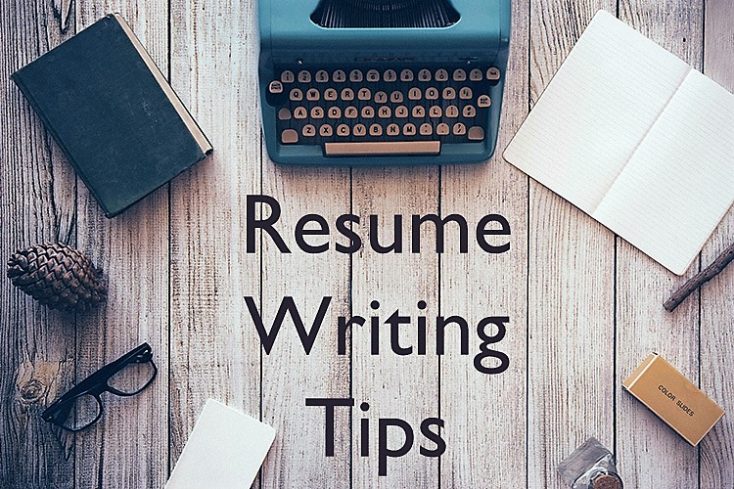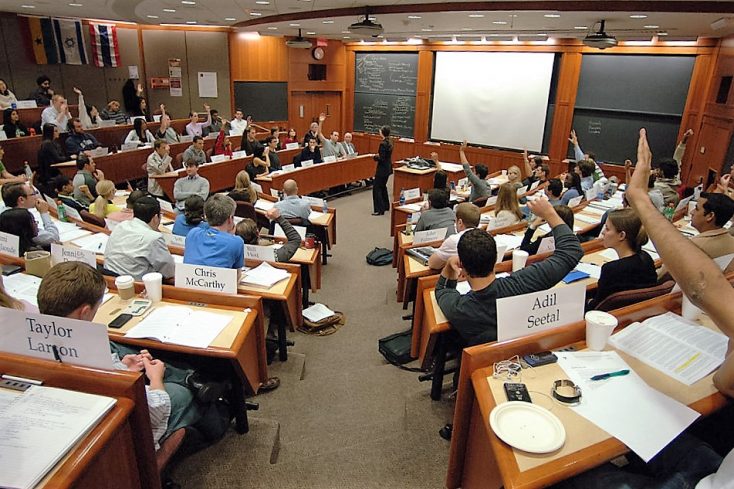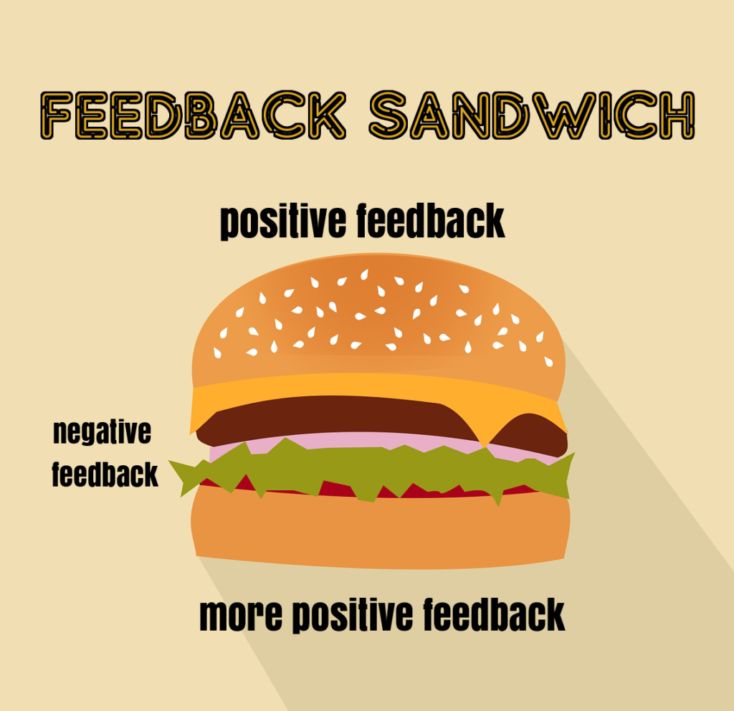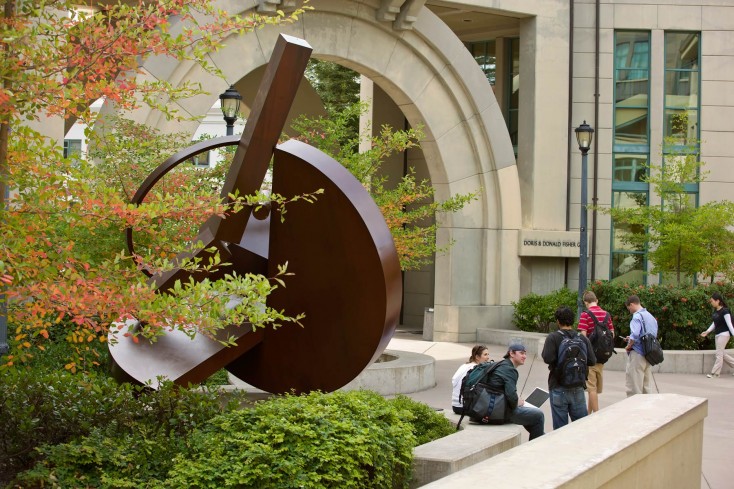Forum Home > GMAT > Quantitative > Problem Solving (PS)
Events & Promotions
| Last visit was: 27 Jul 2024, 00:42 |
It is currently 27 Jul 2024, 00:42 |

Customized
for You
Track
Your Progress
Practice
Pays
09:55 AM PDT
-11:00 AM PDT
08:00 PM PDT
-09:00 PM PDT
05:55 AM PDT
-12:30 PM PDT
07:00 PM IST
-08:00 PM IST
09:00 PM IST
-10:00 PM IST
| FROM Stacy Blackman Consulting Blog: Our Ex-Adcom MBA Consultants Have More Advice |
We recently talked about how Stacy Blackman Consulting has former admissions officers from all of the top programs on our team, and how these ex-adcom MBA consultants help with Flight Test reviews for each of our All-In clients. They also contribute their insider knowledge to our internal message boards and assist with program-specific questions. We asked these valuable team members if they had any advice for our readers getting ready to apply in Round 2. Here’s Part Two of what our ex-adcom MBA consultants had to say:
Until next time, The team at Stacy Blackman Consulting ***Do you want to stay on top of the application process with timely tips like these? Please subscribe to our weekly newsletter, and you’ll receive our expert advice straight in your mailbox before it appears on the blog, plus exclusive offers, promotions, discounts, invitations to events, and more. The post Our Ex-Adcom MBA Consultants Have More Advice appeared first on Stacy Blackman Consulting - MBA Admissions Consulting. |
| FROM Stacy Blackman Consulting Blog: New STEM-Designated Concentration at UNC Kenan-Flagler |
 The University of North Carolina Kenan-Flagler Business School has announced it will offer a new STEM-designated concentration in business analytics and management science in its full-time MBA program beginning January 2020. “Our focus is on strategic decision-making to prepare our graduates to use analytics to lead companies,” said Rajdeep Grewal, the Townsend Family Distinguished Professor of Marketing and a concentration leader. “Our students will develop a deep understanding of business problems and the analytics skills to make informed, data-driven strategic decisions.” The toolkit includes computational tools, predictive and prescriptive models, and statistical methods. The business knowledge encompasses business functions including finance, human resources, marketing, operations, and strategy.  While building their course portfolios, students can hone their data analytic skills across business functions. These skills help students succeed in:
Learn more about the new STEM-designated concentration and its course offerings, professors, employers, and key resources here. The post New STEM-Designated Concentration at UNC Kenan-Flagler appeared first on Stacy Blackman Consulting - MBA Admissions Consulting. |
| FROM Stacy Blackman Consulting Blog: Write a Killer Resume for Business School |
 Do you plan to submit a standard resume along with your MBA application in Round 2? If so, you’re missing a valuable opportunity to sell your candidacy to the admissions committee. Like a traditional CV, the purpose of the resume for business school is to make an excellent first impression. It should also persuade the reviewer to take a closer look at you. However, the reader of your MBA resume will be different than the person hiring you for an investment banking job or an engineering position. Rework your resume so that it functions more as a narrative about your career and outside interests—not a dry list of responsibilities and achievements. A resume for business school should focus heavily on MBA skills and traits such as leadership, teamwork, and international work experience. Some admissions officers consider your resume just as crucial as the MBA essays. The extra work you put into a resume for business school could make the difference between a ding and an interview offer. #1: Shows Career Progression Illustrate career progression by highlighting promotions or showing how you continued to cultivate your skills after switching to a new job. For example, if you have worked for the same company for five years but received two promotions, you should highlight all three job titles, with separate dates of employment and descriptions. Those descriptions should reflect increasing levels of responsibility. Applicants who have been in the workforce for several years, possibly at various companies, may need to be selective in detailing professional progress. But how do you decide which experiences to include and which to ax? First, ask yourself if the work was meaningful. Then, determine if it illustrates a specific skill set or a significant accomplishment. Also, consider if it supports your career path as well as your future goals. Only include it if it makes sense for your overall story. Demonstrate that throughout your career, you have picked up new skills, assumed new responsibilities, and developed as an individual. Emphasize that others have recognized this growth. #2: Provides Leadership Examples Although you’ll further hone your management abilities during an MBA program, the admissions committee wants to know that a foundation of strong leadership skills is already in place. Show when you united people behind a common goal, made use of other’s talents and abilities, instilled a vision, challenged the status quo, identified a new problem, or prioritized the needs of the organization above personal needs. It’s important to note if you manage one or more people. Even if you informally supervise and mentor someone, it’s worth including on the resume for business school. Mention if you’ve taken the lead in recruiting, as it means you’re acting as the face of your company. This demonstrates that leaders at your company respect you and trust that you will represent them well. Remember, your resume is a tool to tell your story, so keep your resume focused on the experiences that highlight the story of you as a leader. #3: Quantifies Results It’s great to describe your responsibilities, but don’t miss the chance to quantify your results whenever possible. Sure, managing staff is interesting. But the fact that you led a team of over 30 employees and improved profitability by 25%, is something a reader can understand. By giving the reader a number, you provide them with the chance to see just what kind of leader you were and will be. Also, keep this point in mind, recently shared by the admissions team at the Tuck School of Business. Focus on achievements, not responsibilities. One way to differentiate between the two is to ask yourself—“If I Ieave this job, will the next person who takes my place be able to write exactly the same bullet point?” If the answer is yes, then there is room to improve. Applicants often find it helpful to bullet point their accomplishments using the STAR method. This acronym stands for Situation, Task, Action, and Result. For each employment position listed on your resume, think of a project, initiative, or transaction where you made a meaningful contribution. Then describe the situation, your task, the actions you undertook, and the results. #4: Avoids Industry Jargon or Acronyms Never assume the admissions committee member reviewing your application is intimately familiar with your particular industry. Write for a lay audience, and avoid flowery or stuffy language. Use familiar words instead. You do want to provide a snapshot of your functional skills. Still, the admissions committee will be more interested in the fact that you led a cross-functional team to develop a new version of your product than the fact that you coded in three computer languages to build the latest version. To appeal to an MBA audience, an applicant must think beyond technical tasks. He or she must identify what lies behind those tasks that might reveal an effective business leader. Rephrase your accomplishments so that anyone could understand them. With hundreds of applications on their desks, the admissions staff has only a few minutes to review each resume. It should be immediately digestible. #5: Looks Clean and Polished Imagine someone scanning your resume for the first time on the 30-second walk down the hall to the interview. That person should be able to get a clear picture of the candidate – and that quickly. Appearances matter when it comes to a winning resume for business school. Make sure to adhere to proper margins, spacing, and accepted fonts. Some applicants try to squeeze it all in by reducing the font and eliminating margins. This is an excellent way to ensure that your resume is not reviewed. No one wants to go blind scrutinizing resume number 207 of the day. Some business schools specify formatting requirements; if so, do not deviate from the requested format. Admissions committees and alumni interviewers look for people who others will enjoy being around both inside and outside of class. Therefore, it’s also a great idea to include at least some brief mention of your interests and hobbies at the bottom of the document. A lot of times, it’s this information that interviewers use to break the ice when they first meet you. Never underestimate the power of a well-executed resume for business school. Use this opportunity to create a powerful first impression on the admissions committee and show why you’d be an asset to their program, and, fingers crossed, your future MBA interviewer. The post Write a Killer Resume for Business School appeared first on Stacy Blackman Consulting - MBA Admissions Consulting. |
| FROM Stacy Blackman Consulting Blog: Find Zen While You Stay on the Waitlist |
 If you were a Round 1 applicant this season, over the last few weeks, you might have received great news, upsetting news, or a mix of both— otherwise known as placement on the waitlist. First of all, the waitlist is encouraging feedback. It means that you are qualified to attend the program. Your application and profile interested the adcomm, but it was a competitive year, though. Unfortunately, they couldn’t immediately offer you a place in the class. No matter the reason, the waitlist is still a tough place to be. So try to stay calm and adopt a zen mindset. This will help you accept what is while making any changes within your power. Will I get in? There is almost no way to know if you will get admitted off the waitlist. It certainly does happen, often, yet you have little information about the ranking of the waitlist, how many people are on the waitlist, or whether the school will reach the yield they are looking for with regular applicants. Therefore, remaining on the waitlist means requires comfort with ambiguity. Hopefully, you were admitted to another school and can decide whether to stay in limbo or not. Should I stay on the waitlist? The decision to stay on the waitlist depends on your interest level in said MBA program. If it is your top choice, you may be willing to remain on the list until school begins, especially if you are willing to move quickly and give up a deposit on a school that has offered you firm admission. If the waitlisting program is not your first choice, or you would like to settle your MBA plans before school starts, you may choose to remove your name from the list. It is a considerate move for another applicant if you do so promptly, allowing someone else a chance at their MBA dream. Can I improve my chances of admission from the waitlist? You may be able to improve your chances. The number one rule of waitlists is to follow directions. The school has provided instructions about how to handle the waitlist process. Follow these directions to avoid negatively impacting your standing with the admissions committee. If the school tells you that no additional materials are required, no supplemental materials are needed, and you should not submit any under any circumstances. If the MBA program does provide the option of submitting additional materials, apply a consistent application strategy to the task. The AdCom may welcome letters of recommendation, improved GMAT scores, or other essays/letters from you. Carefully consider your strengths and weaknesses, and whether the following would be beneficial in your situation: LETTER/ESSAY Have you recently received a promotion at work, accomplished a personal goal, or completed an academic class with a high grade? If so, it may be worth writing a letter to update the admissions committee with your news. Try to keep your essay or letter factual and do not repeat information already included in your original application. RECOMMENDATIONS A supplemental recommendation may add information about you to strengthen your position on the waitlist. If you are involved in an extracurricular activity, know someone associated with the school, or can use a letter to enhance a part of your application, this may be the right direction to proceed in. Make sure your additional recommendation is brief, focused, and adds significant additional information to your overall profile. GMAT SCORES/TRANSCRIPTS Factual information like improved GMAT scores or transcripts from successful business-related classes could go a long way towards bolstering your chances. While waitlist standing is frustrating, it is a positive indication for your application. In the end, you may receive final admission from your chosen program. In the meantime, do yoga, meditate, go for a run–whatever you can do to maintain your inner peace as you wait to hear a formal decision. Good luck! The post Find Zen While You Stay on the Waitlist appeared first on Stacy Blackman Consulting - MBA Admissions Consulting. |
| FROM Stacy Blackman Consulting Blog: Happy Holidays from SBC! |
|
[img]https://www.stacyblackman.com/wp-content/uploads/holiday-2019-734x489.jpg[/img] Seasons greetings from all of us here at Stacy Blackman Consulting! At this time, we want to send our best wishes to you and your families for a wonderful holiday season. Looking forward to a phenomenal 2020 filled with happiness, good health and the promise of new opportunities! Warmest regards, [img]https://www.stacyblackman.com/wp-content/uploads/Stacy_sig.png[/img] P.S: Round 2 deadlines are right around the corner…if you’re applying to Harvard Business School on January 6th but feeling a bit intimidated, don’t miss this terrific post published last year on the MBA Voices Blog on [url=https://www.hbs.edu/mba/blog/post/finding-the-confidence-to-apply-to-hbs]finding the confidence to apply[/url]. The advice is spot-on, and really, it holds true for any elite business school that you may be considering. The post [url=https://www.stacyblackman.com/blog/happy-holidays-sbc/]Happy Holidays from SBC![/url] appeared first on [url=https://www.stacyblackman.com]Stacy Blackman Consulting - MBA Admissions Consulting[/url]. [img]https://feeds.feedburner.com/~r/StacyBlackman/~4/o1FWGAqWjH4[/img] |
| FROM Stacy Blackman Consulting Blog: No Bitter Grapes from Charles Shaw |
|
This knowledge nugget comes to you courtesy of the Blacklight. Enjoy! Trader Joe’s has sold over a billion bottles of its Charles Shaw private label wine since hitting the shelves in 2002. Known affectionately as “Two Buck Chuck,” the wine is smooth on the palate and even easier on the wallet. TJs customers cart away cases of the stuff—it’s literally cheaper than some water brands. If you graduated from college in the last decade or so, you probably know the low-cost libation replaced beer kegs at parties across the country in the aughts.  While you may have ample experience imbibing the brand, you may not realize there’s a real person behind the label. Charles Shaw, a grad of West Point and Stanford GSB, became keen on wineries during a small-business and venture class at Stanford. He wanted to start in the wine business upon graduating. But, as his wife Lucy pointed out, Charles had no money for such pursuits. She suggested he take his degree and go work for a bank instead. At some point, the bank transferred Shaw for a position in France. While there, he fell head over heels with the Beaujolais-style wines that were all the rage. Eventually, he decided to leave the corporate world behind and dive into the venture he felt truly passionate about. Charles and Lucy moved back to the States, and in the late 1970s, started in the Napa wine business. The Charles Shaw Winery, launched with money from Lucy and her family, produced some terrific, award-winning wines from its earliest days, and enjoyed considerable success for nearly 20 years. Unfortunately, a series of miscalculations, a production disaster, a pestilence, and a messy divorce caused the whole operation to go up in flames in 1991. Bankruptcy was the only solution. Two Buck Chuck? Try Zero Buck Chuck Four years later, a court-appointed trustee sold the Charles Shaw Winery brand, label, and name for $27K to Fred Franzia, owner of Bronco Wine Company. Shaw didn’t receive a penny from the sale. Franzia would go on to re-brand and sell the once chic label as an “everyman’s juice” in an exclusive deal with Trader Joe’s.  When the bottles first hit the shelves, Shaw admits he wasn’t a fan, calling the Two Buck Chuck wines and the use of his name, “embarrassing and demeaning.” But over the years, his perspective has mellowed considerably, much as a fine wine does. In a recent conversation with his alma mater, Shaw shared three lessons he’s learned from the failures of his namesake winery. Lesson #1: Fight against rigid thinking “My timing was terrific in terms of getting in there at the right time, but in the premium wine business, like in haute couture and perfume, it’s all about demand,” Shaw explains. He had become so enamored of Beaujolais that he went all-in on a varietal unknown to most Americans. “What I should have done was throw things against the wall to see what would stick rather than just defining myself as a Beaujolais producer. I gambled on that niche. I wanted to be the light-red guy. But I should have made a chardonnay, a merlot, a sauvignon blanc, for example, and put them out there in small quantities, then watched to see if there was a demand pull. And when there was, I should have turned and run in that direction. That would have been so easy to do.” Lesson #2: Be collaborative When asked what he might do differently if he had the chance, Shaw says he would be more collaborative. His wife Lucy didn’t drink, nor did she even like to talk about wine. Some might say that makes for a doomed partnership in the wine business. “If you have partners, it’s really a good idea to have them buy-in. I was collaborative with the industry people, our other partners, but neglected the most important partner of all: my business partner and partner in marriage,” he says. Lesson #3: Watch your expenses Shaw advises entrepreneurs trying to get a small business off the ground to watch their expenses. “I know I paid all my employees on the high end for businesses in Napa Valley,” he admits. “We had a Cadillac health plan. But in a small business, you have to examine yourself to see if you’re tough enough. I know my competitors were.” Still sanguine despite it all Shaw spends his days running a database company out of Chicago, but he hasn’t given up on his vintner dreams. He made two vintages of rieslings at a leased winery in Michigan. At a world riesling championship in Australia, the wines took second and third place. “We got beat by a German outfit that’s 700 years old. But financing is difficult, and I’ve been obstinate about not having partners and trying to do it on my own,” he admits. “So, we haven’t done very well.” Regardless of the setbacks and failures, Shaw says he continues to learn from his experience. He also gets a kick out of the fact that college students adore Two Buck Chuck. His Stanford class reunion invited him to speak about resiliency and his journey toward retirement, with all its highs, lows, twists, and stumbles. “That gave me the chance to look at all the things I went through, and I really enjoyed it,” Shaw says. “I used to be upset about Fred Franzia and Joe Coulombe [MBA ’54 and founder of Trader Joe’s]. But not anymore. I got a note from Joe last Christmas, from some fancy hotel in Florence. He’d sold Trader Joe’s to Aldi, the German guys, back in the ’70s, and he told me how many millions of cases of Charles Shaw wine they sold last year. I look at it this way: He’s out of it. I’m out of it. But Joe and Fred saved the brand, and the brand survives today.” *** Did you enjoy this post? It originally appeared on the Blacklight, our new newsletter for professionals. the Blacklight aims to illuminate with every dispatch that lands in your inbox. If you’re thirsty for guidance to help you slay it at work or as a student and move your goalposts closer, sign up today! The post No Bitter Grapes from Charles Shaw appeared first on Stacy Blackman Consulting - MBA Admissions Consulting. |
| FROM Stacy Blackman Consulting Blog: Stacy Blackman’s 2019 Year in Review |
 How is it possible that we are saying goodbye to 2019 and ready to turn the calendar page to a brand-new decade? You know what that means…resolution time! Once again, we resolve to push ourselves to learn and grow. This fresh start spurs us to rededicate ourselves to both personal and professional goals. With that in mind, we’re highlighting the SBC blog posts that resonated the most with our readers in 2019. We selected each to help you better prepare as you journey along the road to business school. Now, without further ado… Heed This Advice Tips for a Killer MBA Recommendation Letter Many applicants don’t invest time and attention in their reference letters. They select their references, direct them to the proper forms, and hope for the best. You can influence the quality of your recommendations. These are the key elements to keep in mind when choosing who should write your MBA recommendation letters. Background Checks in MBA Admissions Background checks in MBA admissions are more common for some schools than others, but their overall use is growing. Last season, one of our clients shared, “I am a little worried about the background check process. How detailed is the search? How do they verify earnings, for example?”  Two former MBA Admissions Officers on the SBC team–from Harvard HBS and Duke Fuqua–had this response: “It depends on the company the school hires. But, they will verify undergraduate degree and GPA as well as dates of employment, positions held and salary with the HR departments and/or direct supervisors.” That X-Factor Character Prevails for Stanford and Harvard Double Admits We’ve worked with many top applicants this MBA admissions season who achieved this impressive feat—some with scholarships to boot. Here we analyze eight cases—and we have eight specific takeaways to share. Their unique admissions stories can offer some very clear lessons for prospective MBA applicants. Successful Reapplicant to Harvard Business School, Stanford GSB Many applicants face this crossroads—whether to forgo business school completely and focus on their current career path—at the end of an unsuccessful admissions cycle. No one can answer that question but you. However, the important takeaway is that one failed attempt does not mean you’ve blown your chance forever.  See how SBC helped Ed Redden fix three common mistakes in his applications. These improvements ultimately lead to admissions offers from both elite schools the second time around. Rock Those Essays Stanford GSB Essay Tips for 2019-2020 Here at SBC, we have worked with hundreds of applicants over the years who have successfully gained admission to Stanford. As one of SBC’s former GSB Admissions Officers notes, “Stanford is looking for people who will make a big difference AND have a better shot than most in being able to execute. Stanford GSB students also seem to have this ‘X’ factor associated with them. Almost like an ‘unexpected’ trait, talent, or experience.” Wharton School Essay Tips for 2019-2020 Beyond your credentials and experience, fit is important at Wharton School. Are you excited to join the Wharton community? How will you contribute? Wharton values diversity and teamwork and wants a class that will work well with each other. One of the former Wharton Admissions Officers on our SBC team also shared that Wharton is seeking, “Solid applicants across all dimensions with emphasis on strong performance in GMAT and professional experience.” Harvard Business School Essay Tips for 2019-2020 The most challenging part of the Harvard MBA essay is remaining disciplined. One of the former HBS Admissions Officers on the SBC team notes that “The essay really is make or break for HBS – so many applications have acceptable credentials up to that point of the application and it is the essay that sets the overall application apart and earns it the interview.”  Kellogg School Essay Tips for 2019-2020 The Kellogg School is a close-knit community that values diversity and philanthropy. Caryn Altman, a tenured consultant on our SBC team, previously served as an admissions officer at Kellogg and also holds an MBA from the school. Caryn describes the importance of pinpointing “unique points of difference” throughout your entire application—essays, resume, interview, etc.—since it can be challenging to distinguish yourself from other applicants of similar backgrounds. Columbia Business School Essay Tips for 2019-2020 The kind of MBA student who is a good fit for Columbia and its setting in New York City will be those that plan to take full advantage of the unique opportunities on offer. As one of SBC’s former CBS Admissions Officers notes, “With CBS, it really is a holistic approach, but the fit is VERY important. They want to know why CBS- that is a big part of their culture. They want to know you’re going to fit in.” Smile for the Camera MIT Sloan Cover Letter and Video Advice for 2019-2020 Students at MIT Sloan School of Management are engaged, creative, and thinking outside the typical MBA frameworks. One of the former MIT Admissions Officers on the SBC team shared that MIT seeks applicants who can navigate, “problems of progressive complexity, ability to adapt to ambiguous situations, independence of thought, humility/consideration for others.” *** Thank you so much for making the Stacy Blackman Blog a top destination for your b-school research. We hope this resource continues to serve you well as you embark on what is definitely a life-changing, career-boosting journey. On behalf of the entire SBC team, I wish all of you success, health, joy, and continued growth and learning in 2020. See you here next year!  The post Stacy Blackman’s 2019 Year in Review appeared first on Stacy Blackman Consulting - MBA Admissions Consulting. |
| FROM Stacy Blackman Consulting Blog: A Business School Teaching Style for Every Personality |
 Many MBA applicants make the same wrong assumption: No matter which top program you attend, the business school teaching style will be more or less the same. While there are similarities across the top-tier programs, each school has a different teaching style. There’s the case method approach, lecture-based instruction, and the experiential learning and team-based focus approach. Some schools concentrate almost entirely on one style. Others employ a mixture. Finding a fit in teaching style is essential. We advise clients to seek out a program where they can thrive and feel comfortable. However, applicants often push this piece of the puzzle onto the back burner. They tend to place more weight on factors like rankings, career center offerings, location, and culture. Teaching style is often one of the last things applicants focus on. Yes, there are many different aspects of a program to consider as you select your target schools. But we believe this one should have more weight. After all, it directly affects not only your enjoyment of your two-year investment but the quality of knowledge that you walk away with as well. The Case Method Harvard Business School established the Case Method approach more than a century ago. With this method, students analyze and debate authentic management scenarios to create recommendations that the firm in question should employ in the future. Harvard relies on case studies for approximately 80 percent of its instruction. Meanwhile, students at the University of Virginia’s Darden School of Business review more than 500 cases in a variety of industries and functions during their two-year program. Considered the gold standard in management education by many, this method relies on lively class discussions with multiple points of view. A proper case analysis requires a lot of preparation from students. They must feel at ease sharing their ideas in front of large groups. Gregarious personalities will thrive with this business school teaching style. Shy individuals, on the other hand, may cringe at the thought of showing up to class. This is not the learning environment for those who feel uncomfortable speaking in front of strangers. Lecture Style All top MBA programs include courses taught using a lecture format. However, some schools stand out for their significant use of this traditional educational technique. CMU Tepper School of Business uses approximately 50 percent lecture-based instruction. Meanwhile, the lecture format at the USC Marshall School of Business comes in as a close second at 48 percent. The UCLA Anderson School of Management, Vanderbilt University’s Owen Graduate School of Management, and Oxford’s Said Business School use lectures about 40 percent of the time. Fans of the lecture method believe this is the best way to concretely teach students the business concepts and theories they will need once they’re back in the workforce. This business school teaching style may also feel more comfortable for introverted students and those who enjoy absorbing the wisdom of a seasoned professor. In some instances, the lecture approach is simply the most expeditious way to get the information across. Columbia Business School devotes about 40 percent of class time to lecture and 40 percent to case studies. Experiential Approach In recent years, more and more schools have expanded the experiential components in their curricula. These additions include more team challenges, simulations, fieldwork, and extracurricular activities. A leader in this area of action-based learning is the Michigan Ross School of Business. Ross has a seven-week, full-time consulting project known as the Multi-disciplinary Action Project. First-year MBA students connect with corporate, entrepreneurial, and nonprofit projects both in the U.S. and abroad that require thoughtful recommendations on organizational challenges. Harvard Business School has the yearlong Field Immersion Experiences for Leadership Development course for first-year students, which offers small-group learning experiences that are experiential, immersive, and field-based. This hands-on approach to learning benefits those with an entrepreneurial spirit, as well as generalists who enjoy working in groups and want to learn how to get things done. Unlike the lecture and case methods, which focus on theory, experiential learning encourages students to learn by doing. As you can see, there is much variation in how MBA programs present their material. Take a closer look at your personal preferences to find the best business school teaching style for you. This previously published post has been updated for 2020. The post A Business School Teaching Style for Every Personality appeared first on Stacy Blackman Consulting - MBA Admissions Consulting. |
| FROM Stacy Blackman Consulting Blog: Goizueta Foundation Gifts $30M to Namesake B-School |
Emory University’s Goizueta Business School has announced that it will receive a gift of $30 million from The Goizueta Foundation. In honor of namesake Roberto Goizueta, former chairman and CEO of The Coca-Cola Company, the business school will invest the gift in three areas that closely reflect his vision and legacy. These include a global classroom, innovation center, and institute for business and society. Goizueta Foundation gift to support significant innovations These include:
“Our school is dedicated to advancing that notion, and it is through that belief that we are changing the narrative on how people view business in the modern era. This generous and transformational gift will allow us to make significant and sustainable investments in key areas of focus and of growth that will benefit our students, our community, and our society.” The gift is the largest in the history of the business school. It is also the capstone on a critical year in the Goizueta Business School’s history. In 2019, the school celebrated the 25th anniversary of its naming after Roberto Goizueta. Last year was also the centennial of its founding. Read more about the Goizueta Foundation and its major gift to the school here. The post Goizueta Foundation Gifts $30M to Namesake B-School appeared first on Stacy Blackman Consulting - MBA Admissions Consulting. |
| FROM Stacy Blackman Consulting Blog: Do Top B-Schools Have an International Experience Requirement? |
 The ability to work well with people from other cultures has never been more critical. In response, business schools have continued to deepen their focus on globalization. While most schools do not have an explicit international experience requirement, MBA admissions committees seek curious, open-minded applicants who are eager to learn about the world at large. Having meaningful work, study, or travel experience outside your home country makes you more desirable as an MBA applicant. After graduation, these global experiences translate into marketable job skills. Think adaptability, leadership, cultural awareness, and communication and language abilities. INSEAD, for example, lists “international motivation” as a criterion for admission. But this does not mean you have to live or work abroad before you can apply. Instead, it means you seek out and feel comfortable with people from many different backgrounds. The INSEAD blog describes international motivation this way: International motivation is not necessarily about how many countries you have lived in. It is about your willingness to adapt your communication style around different cultures, your motivation to want to explore them, and your desire to effectively collaborate with people who may be very different from you. Here are two key reasons why there is an international experience “requirement” when applying to business school. The value of diverse perspectives Look at the demographics of any elite MBA program and you will see a considerable number of non-citizens enrolled. A cohort of students from an array of backgrounds, cultures, and languages enriches everyone’s experience. Having a broader perspective of global business issues in your arsenal means you bring a unique viewpoint to class discussions and team projects. It also expands your network as you tap into professional associations with your contacts in other countries. MBA applicants should highlight any experiences traveling, studying, or working abroad. Schools want to ensure candidates can actually thrive – not just survive – in the program and work well with a diverse group of classmates. INSEAD notes that you can highlight your ability to navigate this level of diversity can in many different ways. For instance, working in a multicultural team or for a multinational company. Or, dealing with international clients. Have you learned a foreign language? Even a passion for traveling in your spare time counts at INSEAD. Adaptability is a requirement of today’s jobs Have you already logged significant international work experience or education before business school? If so, you are three steps ahead of the game. When you immersed yourself in another language or culture, you likely encountered some form of culture shock. This process ultimately becomes a valuable learning experience. You demonstrate real leadership skills when you break through communication barriers. And when you learn how business practices work in an unfamiliar environment, you adapt to new social and business norms and go beyond your comfort zone. These skills are a crucial differentiator in a competitive MBA applicant pool. International travel and work experience can also offer a wealth of material for your MBA essays. Often, such experiences will spur new career goals and a broader vision for your life. But what if you haven’t traveled a lot? You can still meet the international experience requirement by highlighting instances where you worked with people from other countries and cultures. Can you take on a work project that puts you in contact with international offices or teams? If you have the time and resources, think about traveling internationally in the months before applying. Research international volunteer opportunities or continuing education study abroad programs. Your application probably won’t get rejected because you did not fulfill the suggested international experience requirement—if every single other component is compelling and persuasive. In your essays, reference your enthusiasm for the school’s diverse culture. Discuss your plans to take advantage of study abroad programs. Mention your desire to take part in clubs or student groups that will boost your cross-cultural awareness. As long as you can show you plan to expand your mindset and increase your international exposure during business school, you should be fine. The post Do Top B-Schools Have an International Experience Requirement? appeared first on Stacy Blackman Consulting - MBA Admissions Consulting. |
| FROM Stacy Blackman Consulting Blog: 5 Times it Makes Sense to Apply to Only One MBA Program |
 Many schools consider couples applying together as a special case. Deciding how many business schools to apply to is not a one-size-fits-all proposition. The majority of applicants target four to six schools. But some candidates choose to focus their energies and apply to only one MBA program. The reasons range from the personal to the professional to the financial. Believe it or not, this single-minded approach can pay off—and increase your chances of getting in. Here you’ll find five scenarios where putting all of your eggs in one basket is a perfectly valid decision. Location-specific requirements Most applicants consider location when coming up with their school list. Sometimes candidates prefer an urban environment over rural. Or, a warm climate instead of cold. Often the location preference is industry-specific. For instance, applicants keen on finance often look exclusively at schools in or near New York City. Do you need to remain in your current region? Maybe you want to live in a specific city. In these cases, you may need to apply to only one MBA program because it’s your only option. Perhaps you have the needs of a spouse or children to consider. If so, you may want to attend business school without uprooting the lives of your loved ones. The location requirement holds especially true for applicants considering part-time or evening MBA programs who plan to continue working while they earn their degree. Company sponsorship If you will attend business school on your company’s dime, you may have to contend with the caveat that they will only sponsor a particular MBA program or only a part-time program. If you plan to stay at the organization long-term, you might view the limitation on where you can earn that MBA degree educational subsidy is probably worth it. Highly specific career goals The decision to apply to only one MBA program can make sense for a person who has a very particular career path–say, healthcare, technology, real estate, etc. You might be very interested in a specific program offered by one school, or a teaching method, or a set of professors. If you can determine which MBA program will likely connect you with the company you want to work for, and if that company only recruits at one program, then there’s probably only one place you want to earn the degree. One former client, Jeremy, had a good job at a tech startup in Menlo Park. He only wanted to remain in that world – exploring other startups, networking with tech entrepreneurs and executives, and staying looped into that scene. He also wanted to keep working a few hours a week during school. Stanford Graduate School of Business, an ambitious choice, was the only school that captured his heart. Fortunately, the gamble paid off. He ultimately received an admission offer from this prestigious program. Joint application with a partner While this demographic makes up a small percentage of applicants, it’s a significant one. You’ll need to explicitly convey to the admissions committee that you and your partner are both applying to their program. Many schools consider couples applying together as a special case. Schools generally don’t want to break up families or relationships. If both candidates meet admission requirements, you may have an easier shot at entry. As you select your schools, research clubs and support available to married students. If you can, find out how other applicants presented their case to the admission committee. Intuition Some applicants have had their heart set on a single school since the idea of pursuing an MBA first started percolating. If you fall into this camp, you’ll have an easier time than many other applicants explaining why “X” program truly is the only place for you. Showing how you are a good fit for the program, and proving your utter commitment to attending that school, reassures the admissions committee that you will accept an offer of admission if given a chance. The admissions committee always have yield in the back of their minds when making admissions offers. No school likes it when accepted candidates turn them down for a competing program. As a bonus, it’s much easier to research and apply to only one MBA program. You have a single MBA application and can completely tailor it to one school, as opposed to creating several unique applications at the same time. Whatever your reasons for having a single b-school on your mind, make sure that your academic and professional profile is in line with the requirements and expectations at that particular school. This approach requires pragmatism and optimism in equal measure. A version of this post originally appeared on Stacy’s “Strictly Business” MBA Blog on U.S.News. The post 5 Times it Makes Sense to Apply to Only One MBA Program appeared first on Stacy Blackman Consulting - MBA Admissions Consulting. |

File comment: Women and MBA
7BEFA23D-1960-4DE4-81D8-2FDC1C6A0EBE.jpeg [ 1.06 MiB | Viewed 2104 times ]
| FROM Stacy Blackman Consulting Blog: 5 Tips to Help You Speak Up, Boost Confidence |
 Every day, people in homes and offices across the country face a daunting decision. Do I speak up and risk getting penalized by or embarrassed in front of my friends, family, colleagues, or superiors? Or, do I remain silent, refrain from influencing a conversation or decision, and go unnoticed? In his stellar TED Talk “How to Speak up for Yourself,” Columbia Business School professor and negotiations expert Adam Galinsky offers viewers an answer to this time-weathered dilemma. Through vivid and real-world examples, Galinsky offers viewers five steps to follow to increase their power, overcome insecurity, and boost their assertiveness in public settings. “Each of us has something called a range of acceptable behavior. When we stay within this range, we are rewarded; when we step outside of this range, we are punished by being dismissed, demeaned, or ostracized,” says Galinsky, the Vikram S. Pandit Professor of Business at CBS. “To speak up, we need to both understand our range and also learn how and when to expand it. The key thing that determines that range more than anything else: your power.” Smart Strategies to Help You Speak Up Galinsky provides a series of five tools we can use to help increase power and improve assertiveness.
“Speaking up can be risky, but these tools will help lower your risk,” says Galinsky. “Whether you’re offering advice to a family member or friend, or deciding whether to confront your employer about a pertinent issue at work, these steps will help increase your confidence, elevate your power, and improve your assertiveness by expanding your range of acceptable behavior.” *** We have reposted this previously published blog entry because it offers valuable—and actionable—insight to help you become the best version of yourself in 2020! Photo by Jason Rosewell on Unsplash The post 5 Tips to Help You Speak Up, Boost Confidence appeared first on Stacy Blackman Consulting - MBA Admissions Consulting. |
| FROM Stacy Blackman Consulting Blog: The Feedback Sandwich is Stale AF |
|
This knowledge nugget comes to you courtesy of the Blacklight. Enjoy! Most of us are familiar with the advice to couch or preface negative feedback with at least two positive messages, aka the feedback sandwich. In theory, this takes the sting out of whatever nugget of knowledge the person wants to drop on you. Some leaders think it’s easier for people to accept criticism if they also hear something positive. Others believe providing both positive and negative comments at the same time presents a balanced performance evaluation.  Feedback is vital to our career trajectories. But despite these good intentions, we often struggle giving—and accepting—feedback. Instead, we try to avoid the task altogether. Or, when on the receiving end, get defensive or take the criticism as a personal attack. It turns out, there’s a much better way to give constructive criticism than the feedback sandwich method. If it’s your job to provide feedback, remember that often, how you say it matters more than what you say. I’ll have the no-carb feedback, please. Hold the bread—just give me the meat already. Supervisors beholden to the feedback sandwich approach think it helps the giver ease into an uncomfortable conversation. In reality, this delay tactic ratchets up the very anxiety it attempts to avoid, organizational psychologist Roger Schwarz writes in Harvard Business Review. Imagine if you verbalized this strategy out loud, says Schwartz. It would go something like, “Alex and Stacey, I have some negative feedback to give you. I’ll start with some positive feedback to relax you, and then give you the negative feedback, which is the real purpose of our meeting. I’ll end with more positive feedback so you won’t be so disappointed or angry at me when you leave my office. How does that work for you?” Umm…Hard pass on that one. Think of feedback as guidance—not a dressing down. “In the work environment, we have a duty to give and get feedback,” says Professor Ellen Taaffe of the Kellogg School in this podcast on constructive criticism. “It’s your duty as a manager, but also if you’re managing your career, you want to get feedback. It’s the only way to get better and to get to what you want.” As a manager, aim to provide timely feedback—don’t wait for a quarterly review. Keep it task or behavior-focused, not personality-based. Feedback should be both clear and actionable. Make it a purposeful conversation, not a one-sided rant. Also, stay open to the possibility that you may not have the only valid interpretation of a given situation. Taaffe and her interviewer Fred Schmalz talk about how you can tone down the emotional impact of negative feedback by remembering that “people’s weaknesses are often the flip side of their strengths.” Then, they say, the message goes from, “Fix your flaws,” to “Keep playing to your strengths while you neutralize your weaknesses.” How about feedforward instead? For many of us, criticism stings in part because we’re powerless to correct our past mistakes. That’s why there’s a growing movement away from feedback and toward feed-forward. Instead of judging past performance, the feedforward approach focuses on a person’s development in the future. In his book The Feedback Fix, Joe Hirsch notes that people often don’t make progress after receiving feedback because they don’t know what to do with it. “If you want feedback to make an impact,” Hirsch writes, “you have to put it in terms that people can operationalize.” In his book, he cites studies showing that regular feedback doesn’t typically result in a transfer of new skills or habits. But, when you combine feedback with coaching, the transfer skyrockets to 95 percent. Providing a constructive evaluation is no easy task. But if delivered with compassion and understanding, people are usually open to receiving your feedback if it will help them to succeed. Whether you’re on the giving or receiving end, keep an open mind and a willingness to listen. After all, there can be no improvement without feedback, and we all want to keep growing in life, right? *** Did you enjoy this post on the perils of using the feedback sandwich approach? It originally appeared on the Blacklight, our newsletter for professionals. At the Blacklight, we aim to illuminate with every dispatch that lands in your inbox. If you’re thirsty for guidance to help you slay it at work or as a student and move your goalposts closer, sign up today! The post The Feedback Sandwich is Stale AF appeared first on Stacy Blackman Consulting - MBA Admissions Consulting. |
| FROM Stacy Blackman Consulting Blog: B-Schools Work to Attract Non-Traditional Applicants |
 Admissions teams continue to ramp up efforts to attract non-traditional applicants to their MBA programs, says the Graduate Management Admission Council. These prospective students bring unique experiences and skills to business school and the business world. Non-traditional applicants bring different perspectives to classroom discussions, which enhances the learning environment for all. Working in diverse teams in one of the most effective ways to learn essential soft management skills. Today’s MBA students want to make an impact across industries, like healthcare, entertainment, technology, and nonprofits. One major way business school admissions committees work to lure in non-traditional applicants is by focusing on transferable skills, regardless of the person’s background. These include characteristics such as leadership, team building, and analytical thinking. Take, for example, former Hewlett-Packard CEO Carly Fiorina, who has an undergraduate degree in Medieval History and Philosophy. That’s about as far away from a business background as you can get. However, she points out that “I learned how to condense a … lot of information down to the essence. That thought process has served me my whole life.” A Welcoming Environment for Non-Traditional Applicants Deb Xavier told Poets & Quants she has been struck by the “sense of belonging” inherent to the Class of 2021 at the Ross School of Business. “As a non-traditional MBA candidate, and a single mother, the collaborative and inclusive community was more than I could ever expect. Right from the beginning of my interactions, I knew I would have friends for life.” Applicants with unconventional or less traditional work or academic experience before business school often worry about how admissions committees will assess their records. However, it’s more than okay to be different. No MBA program wants to fill an entire class solely with candidates from investment banking or consulting. In fact, non-traditional applicants often stand out in the MBA admissions process. Also, non-traditional applicants shouldn’t automatically assume that keeping up with MBA classmates will be a huge challenge, the adcomm at UC Berkeley Haas School of Business has noted. Non-traditional students often make up a large portion of the MBA class at Haas. “When I talk to people from other non-traditional backgrounds, their main concern is, ‘I’m not going to be able to hack it in business school, I’m going to be so behind and all of these people are going to be so much smarter than me,’ and the long and short of it is that it is absolutely not true,” said Amelia Kusar, who majored in classical music performance as an undergrad. The experience is similar at Wharton School. “To my great surprise, being ‘nontraditional’ at Wharton is completely normal, and you will survive. You got in because you belong here, and because Wharton knows you’ll thrive,” said MBA grad Pauline Koningsveld. Work with Us Do you have a non-traditional background? SBC can help you strategize and gain admission to the business school of your dreams. Contact us to set up a complimentary analysis of your candidacy today! The post B-Schools Work to Attract Non-Traditional Applicants appeared first on Stacy Blackman Consulting - MBA Admissions Consulting. |
| FROM Stacy Blackman Consulting Blog: Ross School to Launch STEM Track |
 The University of Michigan Ross School of Business has announced it will launch a STEM-designated track within its full-time MBA program. Starting in fall 2020, this new STEM track will meet the needs of students interested in pursuing quantitative management and business analytics roles across many industries. “Business analytics has become essential in helping organizations make strategic business decisions,” says Ross School Dean Scott DeRue. “Our new STEM track will leverage the world-renowned general management curriculum at Ross to prepare students from a variety of backgrounds to be leaders in the business world of today and tomorrow.” Besides the required full-time MBA core courses, the STEM track will require students to complete an additional 18 credit hours. Students can choose from a specific set of electives across many business disciplines. These include accounting, finance, management and organizations, marketing, and technology and operations. Electives slated for the new track will include:
STEM Track continues innovation trend at Ross The announcement marks the latest in a series of MBA program innovations at Michigan Ross. This year, Ross began offering a +Impact Studio course. In it, full-time MBA and graduate students from across U-M translate insights from faculty research into solutions for pressing societal challenges. The school also launched the Michigan Ross FinTech Initiative. This comprehensive academic program aims to prepare students for successful careers in the rapidly growing fintech sector. Three years ago, Ross created a data and business analytics concentration, which has seen strong student interest. The school continues to expand its Ross Experiences in Action-Based Learning (REAL) portfolio as well. This collection of experiences allows students to start, advise, lead, and invest in real businesses while at Michigan Ross. “We are constantly looking for new ways to provide our students with the educational experiences and opportunities that will enable them to thrive in their future careers,” said Soojin Kwon, managing director of Full-Time MBA Admissions and Program at Michigan Ross. Current first-year Ross MBA students can express their interest in pursuing the STEM track later this semester. All incoming Full-time MBA students will be able to participate. Source: Michigan Ross to Offer New STEM Track for Full-Time MBA Students The post Ross School to Launch STEM Track appeared first on Stacy Blackman Consulting - MBA Admissions Consulting. |
| FROM Stacy Blackman Consulting Blog: 11 Ways to Prepare for Your B-School Interview |
|
[img]https://www.stacyblackman.com/wp-content/uploads/49170327958_e61f53a73f_k-734x489.jpg[/img] As you may guess, the purpose of the MBA admissions interview is twofold. First, it gives the AdCom a chance to see a candidate’s personality, leadership qualities, and motivation for pursuing an MBA. Secondly, it also lets applicants tell their own story beyond the essays and other materials in the application. Once you receive your b-school interview invitation, your focus should be on preparation. Keep in mind that many schools, such as [url=https://www.tuck.dartmouth.edu/mba/blog/tuck-admissions-insights-your-admissions-interview]Dartmouth Tuck[/url] and [url=https://www.stacyblackman.com/blog/mit-sloan-mba-interview/]MIT Sloan,[/url] pose behavioral questions during the interview. Presenting yourself clearly can be especially difficult with behavioral questions (“Tell me about a time you…”) because it is natural to launch into a story without much direction. Stay focused on telling your story in order to demonstrate the qualities you wish for schools to see. [b]Do these 11 things, and you’ll knock it out of the park on the big day.[/b] [list] [*]Go into it with confidence.[/*] [*]Know yourself, or the version of yourself that you want to display.[/*] [*]Cover your weaknesses.[/*] [*]Build up a broad base of knowledge about business and the world.[/*] [*]Study the school in-depth, and, if possible, research the person who will interview you, too.[/*] [*]Practice.[/*] [*]Dress the part.[/*] [*]Have a list of stories that you can adapt to various questions ready.[/*] [*]Keep your answers concise, but always have a lot more to say.[/*] [*]Stay cool.[/*] [*]Know what questions to ask.[/*] [/list] Finally, wrap up your b-school interview with a sincere thank you for the interviewer’s time. Also, remember to ask for a business card if you haven’t already received one. Send a [url=https://www.stacyblackman.com/blog/mba-interview-thank-you-notes/]thank-you note[/url] or email within 24 hours, and try to include a memorable detail from your conversation to help the interviewer remember you as well as to reiterate your interest in attending the school. The interaction in a b-school interview speaks volumes about what kind of teammate you will be when you are in the program, so make sure the right message is coming across loud and clear. Photo credit: [url=https://www.flickr.com/photos/158467925@N05/49170327958]Launch Vic[/url] ([url=https://creativecommons.org/licenses/by/2.0/]CC BY 2.0[/url]) This previously published post has received relevant updates for the 2019-2020 admissions cycle. The post [url=https://www.stacyblackman.com/blog/11-mba-interview-tips/]11 Ways to Prepare for Your B-School Interview[/url] appeared first on [url=https://www.stacyblackman.com]Stacy Blackman Consulting - MBA Admissions Consulting[/url]. [img]https://feeds.feedburner.com/~r/StacyBlackman/~4/EO6fBJnhHmw[/img] |
| FROM Stacy Blackman Consulting Blog: Mapping Out Your MBA Application Timeline |
 Once you’ve decided to pursue an MBA, you’ve got your work cut out for you. Applicants need to fit in test prep, visiting schools, and developing essays with other personal and professional commitments. The best way to do this is to put together your MBA application timeline several months before your target deadlines. If you’re planning to apply to business school in the fall, come up with a game plan now. That way, you can complete the admissions components within a schedule that doesn’t necessitate sleepless nights and a jumbo bottle of Maalox. Your MBA application timeline should allow time for: Community Involvement Now is a great time to deepen or establish your involvement with a community organization. Have you remained active with outside activities over the last couple of years? Then consider stepping your activities up a notch. Offering to organize an event is a great discrete activity. It allows you to work in a team, make an impact, and show results. Think up roles that will allow you to take a leadership position and create a real impact before September. Essays and Test Prep The amount of time MBA aspirants will spend on their applications will vary, depending on writing abilities and general work efficiency. That said, plan to spend between 40 and 60 hours preparing four to eight applications. Non-native English speakers will also likely need to allot more time on their applications, particularly on writing, revising, editing, proofing, formatting, and inputting essays. The other piece of this puzzle is, of course, the GMAT or GRE. Have you completed the exam and feel satisfied with your score? If you still need to take the exam, you have a lot of work ahead of you, as applicants typically devote at least 100 hours to test preparation. Depending on where you are in the process, you may have to take a prep class and perhaps take the test more than once. The good news is, Round One is still nine months out on your MBA application timeline. So, you have enough time if you get serious soon. Bolstering your Quant Profile An undergrad GPA hovering around 3.5 is generally considered fine. If your GPA is a 3.2 or below, or you majored in liberal arts, you may want to consider taking quantitative classes to enhance your academic profile. The MBA canon generally consists of Calculus, Statistics, and Microeconomics. Did you take any of those classes in undergrad and score a C or below? If so, you should retake the classes now. Where you take the class is much less important than the course material and grade (aim for A’s!!). A local community college is a great option. Structured Work Sessions Some people work most efficiently when they can break up tasks into smaller, more manageable pieces. Meanwhile, others prefer to devote several hours to their writing in one sitting. By now, most MBA applicants know how they work most effectively. Structure your writing and editing sessions accordingly. We typically recommend that candidates allocate two to three hours each time they sit down to work on their essays, particularly for the first few drafts. Approach the essays holistically. You won’t have a compelling final product if you’ve only snatched 15 minutes here and 30 minutes there. Conversely, most applicants should also avoid the “marathon session.” Few people are still sharp or creative eight hours into a writing and editing session. If you need to make up for lost time, try breaking it up with a session in the morning and another in the evening. Thoughtful Revisions Applicants should also build several weeks for reflection and feedback into their MBA timeline. If you can come back to your essays days later with fresh eyes, you’ll often think of a better example or more inspired language to illustrate a certain point. This won’t happen if you’re forced to work at warp speed. Distributing your writing and editing over a reasonable period also makes it easier for friends, family, or colleagues to provide feedback. It’s unfair to ask someone to turn around comments in a 24-hour period. Build a few days into your MBA application timeline to allow them ample opportunity to give you their critiques. Also, leave yourself adequate time to reflect upon and incorporate their feedback. The b-school application process is stressful, but careful planning with an MBA application timeline will make the experience manageable. Also, it can help you channel your energies into continually improving your candidacy… right up until the moment you submit your applications. Updated in January 2020 The post Mapping Out Your MBA Application Timeline appeared first on Stacy Blackman Consulting - MBA Admissions Consulting. |
| FROM Stacy Blackman Consulting Blog: Too Much of a Good Thing |
 This knowledge nugget comes to you courtesy of the Blacklight. Enjoy! If asked to name some of your core strengths, would attributes like these make the list?
An ultra driven person might steamroller over others. If you’re too direct, you appear insensitive. Too easygoing, and people take advantage of you. When you’re hyper-focused on details, you can become a control freak. Overly cooperative people may just be avoiding conflict at all costs. If you’re too inquisitive, you can come off as nosy AF. Crazy, right? Or, another common phenomenon is engaging the same strength approach to every problem, without considering whether it’s the most appropriate tool for the job. In fact, “There’s a growing body of evidence suggesting that success doesn’t come from playing to your strengths. It comes from playing your strengths in the right situations,” writes Adam Grant for The New York Times. Harvard Business Review also highlights the dangers of “lopsided leadership” that arise from overdoing your strengths. “Once you overplay a strength, you’re at risk of diminished capacity on the opposite pole,” the authors point out. “For example, a leader who is good at getting people involved in decisions, and has been encouraged to build on that strength, may not realize that in engaging so many others he is taking too long to move into action.” As you can see, more is not always better. Time for a reality check to find out if you’re taking a strength too far. Do your own 360 review If you aren’t 100 percent sure about what your strengths are, consider taking a fun, evidence-based personality assessment like one of these offered by the University of Pennsylvania. Then, write down your list of core strengths. Once you have it, describe or define what each looks like at both appropriate and excessive levels. Next, ask yourself: What should I do more of, or less? On which strengths have I hit the Goldilocks-level sweet spot? Unfortunately, many of us have trouble seeing our strengths as anything but positive. That’s when you need to enlist help from trusted friends, colleagues, or family, who can provide an unflinching assessment. Ask them to name your three best characteristics. Next, see if they can come up with at least one way you could become an even more awesome friend/coworker/family member. With their help, you can identify specific behaviors ripe for change or improvement. Don’t get stuck honing only strengths Too often, people focus exclusively on building up their strengths. They forget to seek out new experiences that would help them grow in their careers by bulking up in other areas. If you care about professional and personal development, try to put yourself in challenging situations. Learn to embrace change. Shore up your skills in areas you currently consider weak. As Grant points out, “Strengths are like muscles: If you focus only on your triceps, your biceps will suffer.” Now’s the time to do a thorough self-assessment to determine whether you might be overworking one of your strengths. The insights you glean can help you curb sabotaging behaviors that might otherwise harm your career. *** Did you enjoy this post on the perils of overusing your strengths? It originally appeared on the Blacklight, our newsletter for professionals. At the Blacklight, we aim to illuminate with every dispatch that lands in your inbox. If you’re thirsty for guidance to help you slay it at work or as a student and move your goalposts closer, sign up today! The post Too Much of a Good Thing appeared first on Stacy Blackman Consulting - MBA Admissions Consulting. |
| FROM Stacy Blackman Consulting Blog: Haas Launches Accelerated Access Deferred Admissions Program |
 Last week, the Haas School of Business announced the launch of a new deferred admission program for UC Berkeley undergraduates. Called Accelerated Access, the program gives students the option of applying early for a spot in the full-time MBA program. They can then defer admission for two to five years while they gain the required professional experience. The program will initially be open only to UC Berkeley undergraduate and graduate students in their final year of study. The plan is to expand to students throughout the University of California system and then more broadly in the future. “Accelerated Access is an innovative way for students to secure a seat in our MBA program, providing a way for them to pursue full-time work that aligns with their passions, with reassurance that they will be able to return to a top-ranked MBA program in a few years,” said Morgan Bernstein, director of strategic initiatives, who is spearheading the launch. Accelerated Access will reach across campus Under Accelerated Access, undergraduates will apply to the MBA program during the final year of their bachelor’s program. Successful applicants will gain conditional admission and can enroll after a flexible two-to-five-year deferment period for professional experience. Haas Dean Ann Harrison said Accelerated Access will attract students who previously might not have considered an MBA. “We have so much talent here in the Berkeley community,” Harrison said. “This is another way that we are cultivating and committing to that talent.” Bernstein has been introducing the program across campus in recent weeks, and says the early response has been enthusiastic. “We believe that this program will increase the diversity of our class, compelling students from a wide variety of academic disciplines to consider an MBA—from students in environmental science who want to pursue careers in sustainability to engineering students who want to complement their technical skills with a business foundation,” she said. Application fee waived There are two application deadlines in the pilot cycle: Thursday, April 2, 2020 and Thursday, June 11, 2020. The application process is similar to that of the full-time MBA program. Requirements will include a resume, two letters of recommendation, two short essays, undergraduate transcripts, and either the GMAT or GRE standardized test. Applicants will also complete a required admissions interview. Haas will waive the $200 application fee for UC Berkeley applicants this year. It will also make up to five $100,000 scholarship awards to celebrate the launch as well as the 10th anniversary of the Defining Leadership Principles: Question the Status Quo, Confidence Without Attitude, Students Always and Beyond Yourself. Embodiment of the principles will be among the criteria that are considered for the awards. Shaibya Dalal earned a BA in political science in 2011 from Berkeley and returned in 2018 as a full-time MBA student. Dalal said she couldn’t be happier that she chose Cal twice. “The MBA culture at Haas is incredibly collaborative—whether you need notes from a class, advice for your start-up, or even help moving furniture, you can rely on Haasies,” she said. “My peers are kind, generous, open-minded, and intellectually curious. Constantly being around such brilliant people has challenged and stimulated me in completely new ways.” For more information about the program please email accelerate@haas.berkeley.edu. The post Haas Launches Accelerated Access Deferred Admissions Program appeared first on Stacy Blackman Consulting - MBA Admissions Consulting. |

|
|